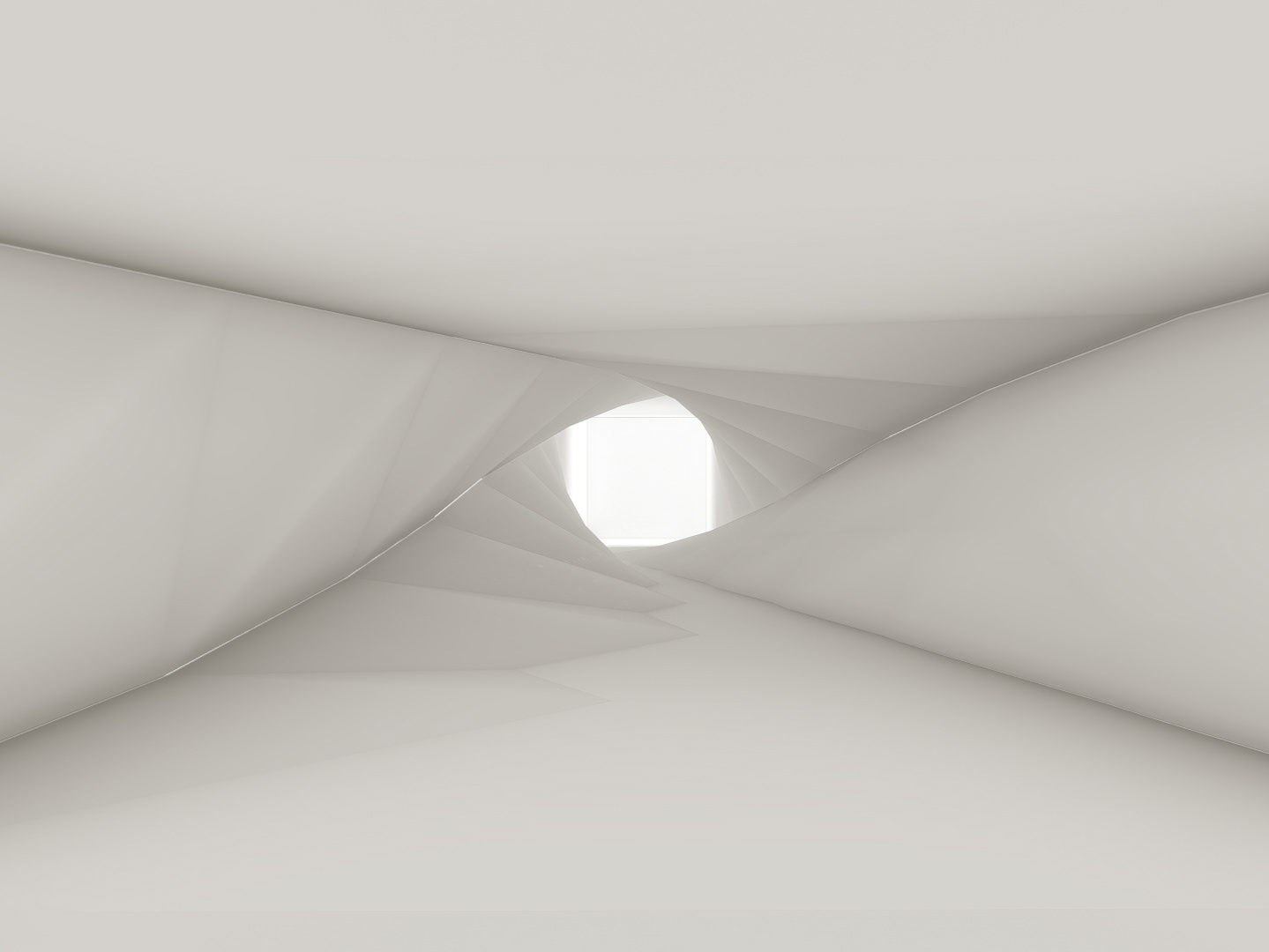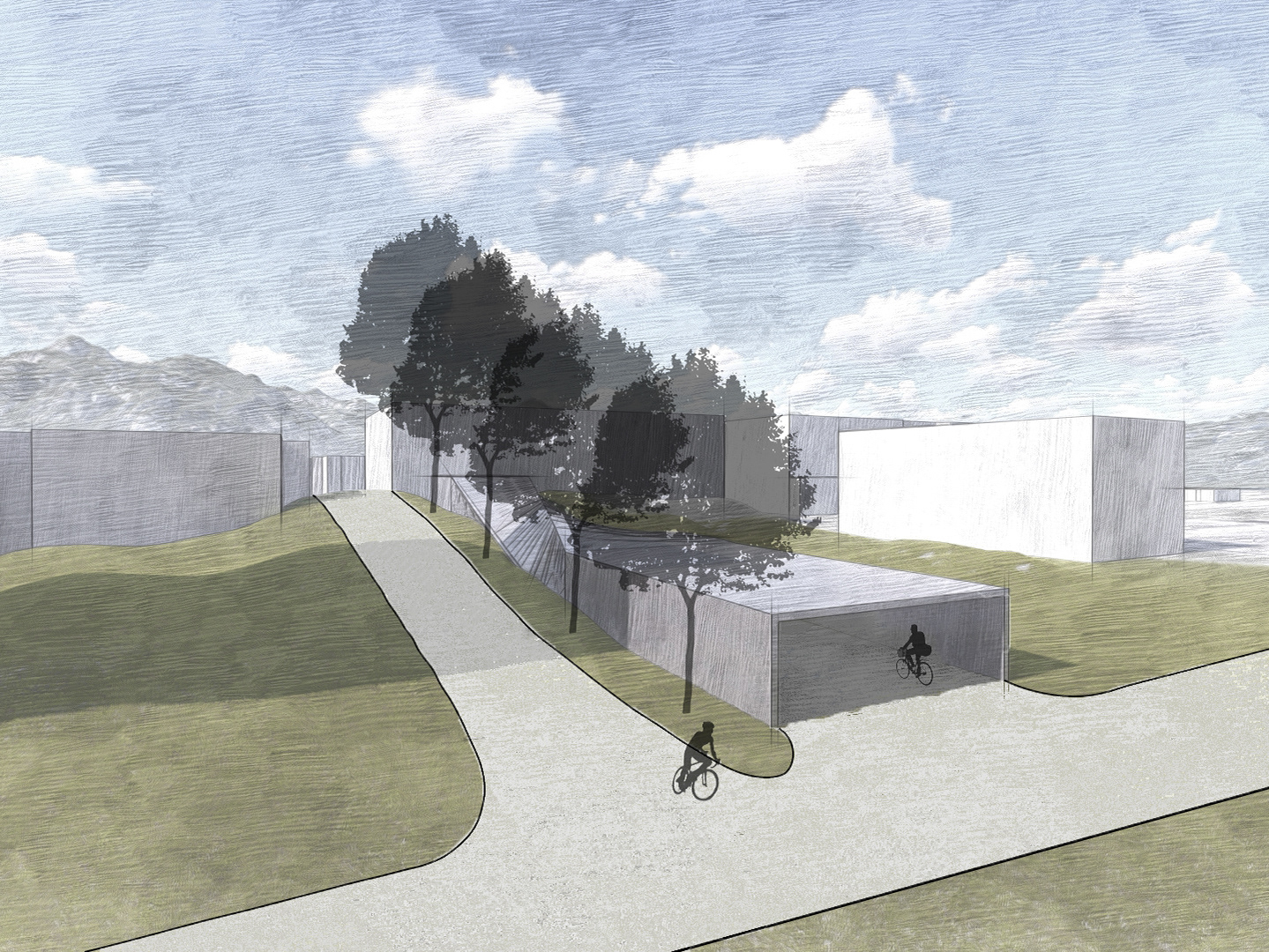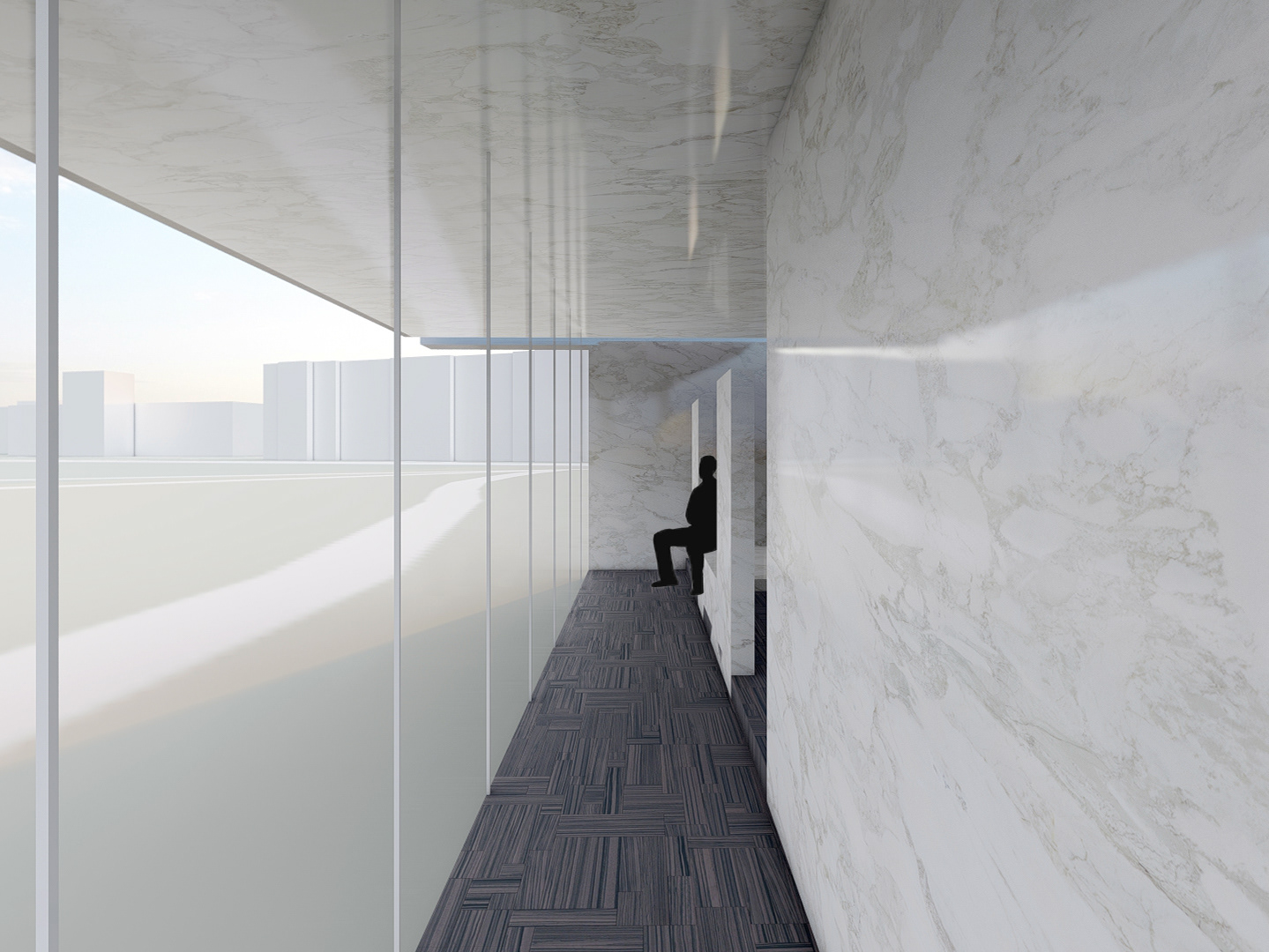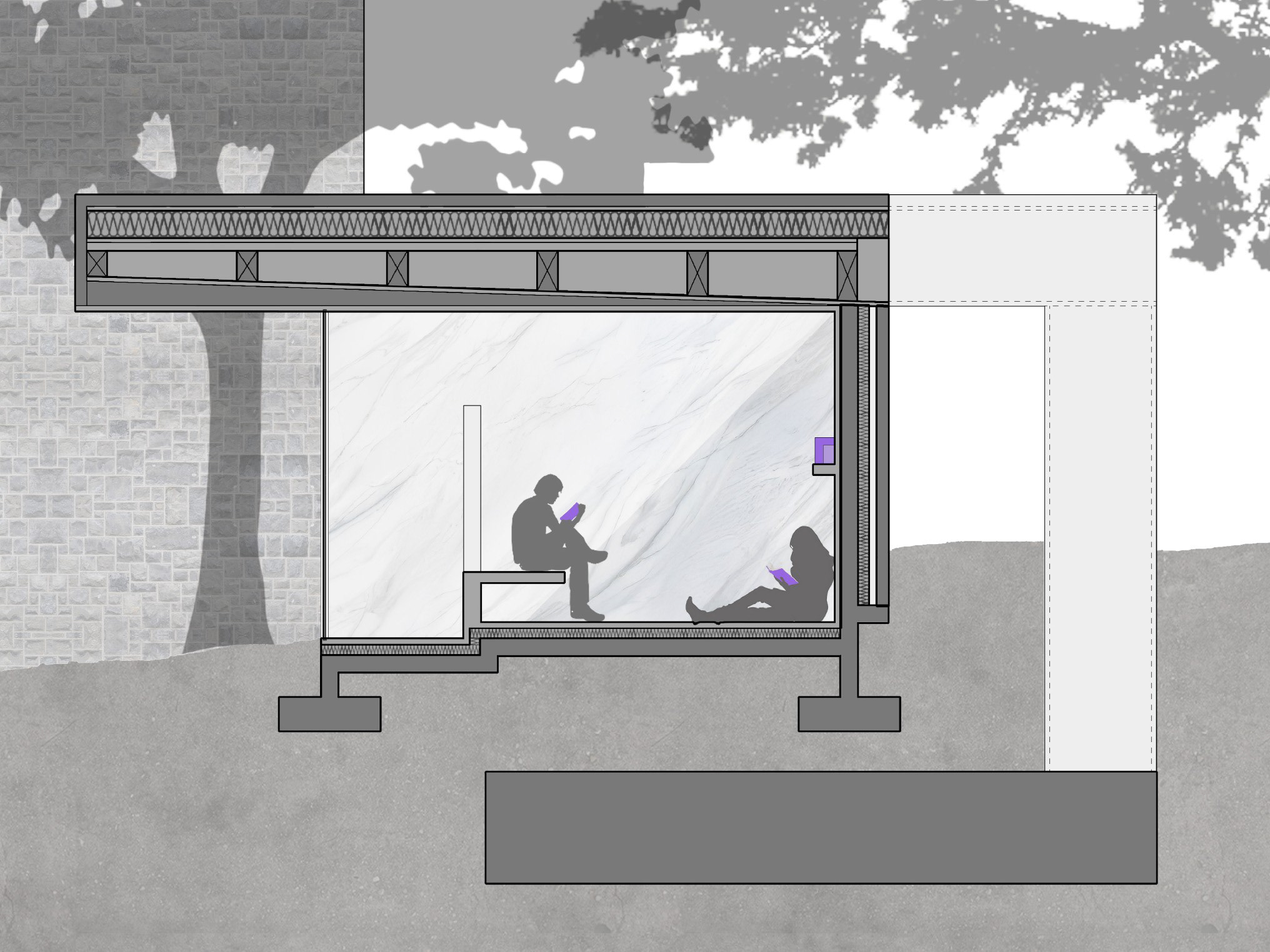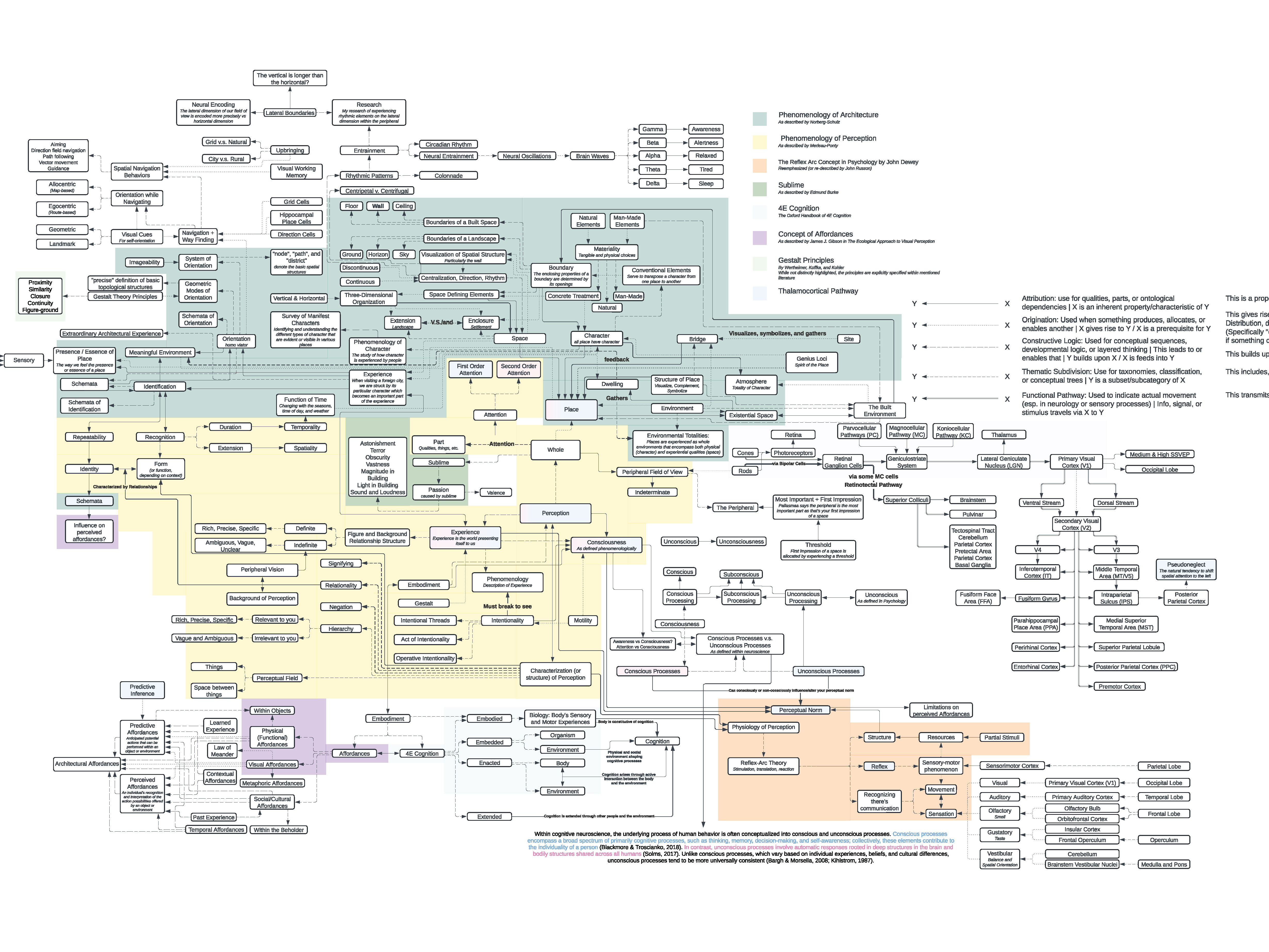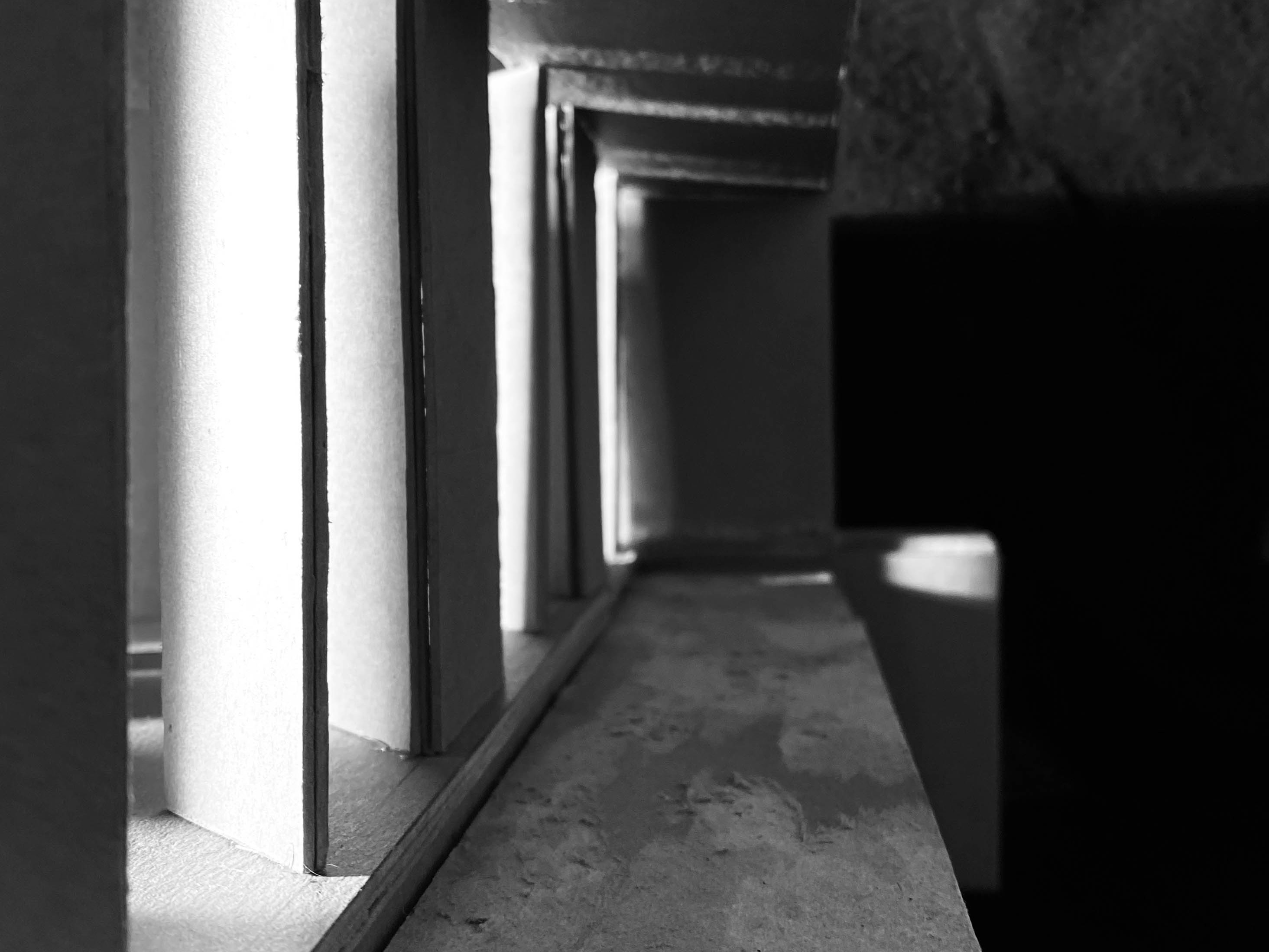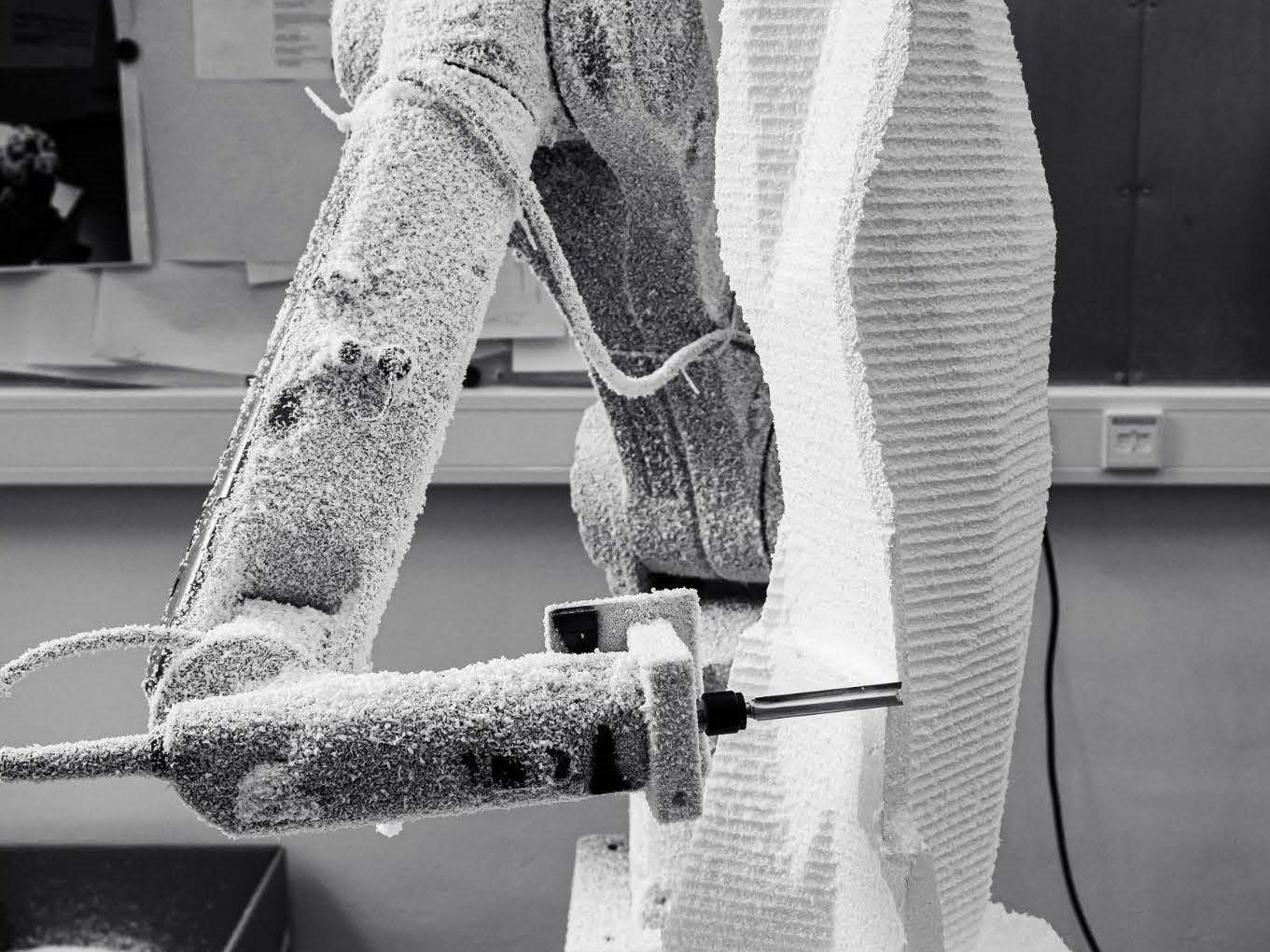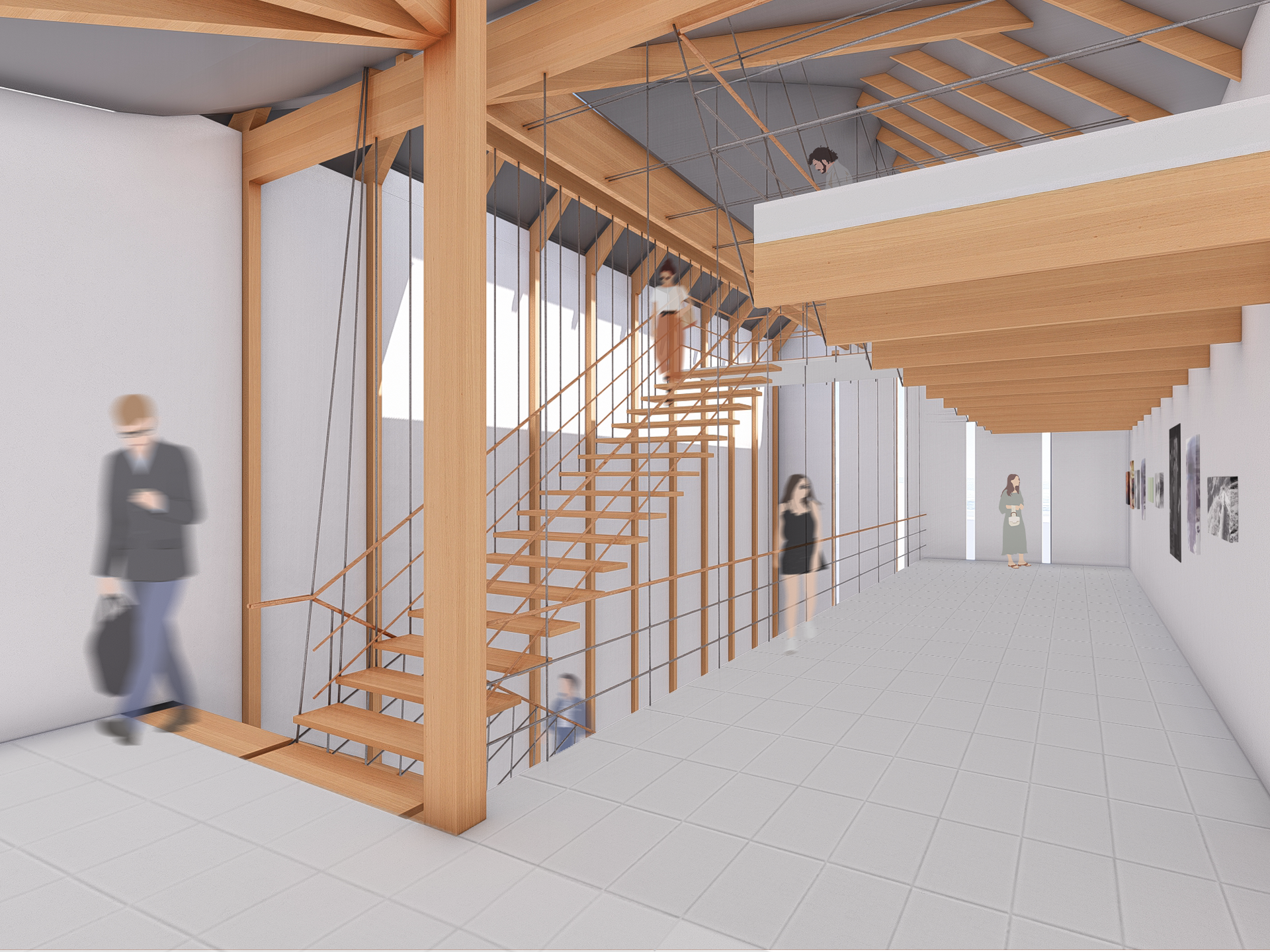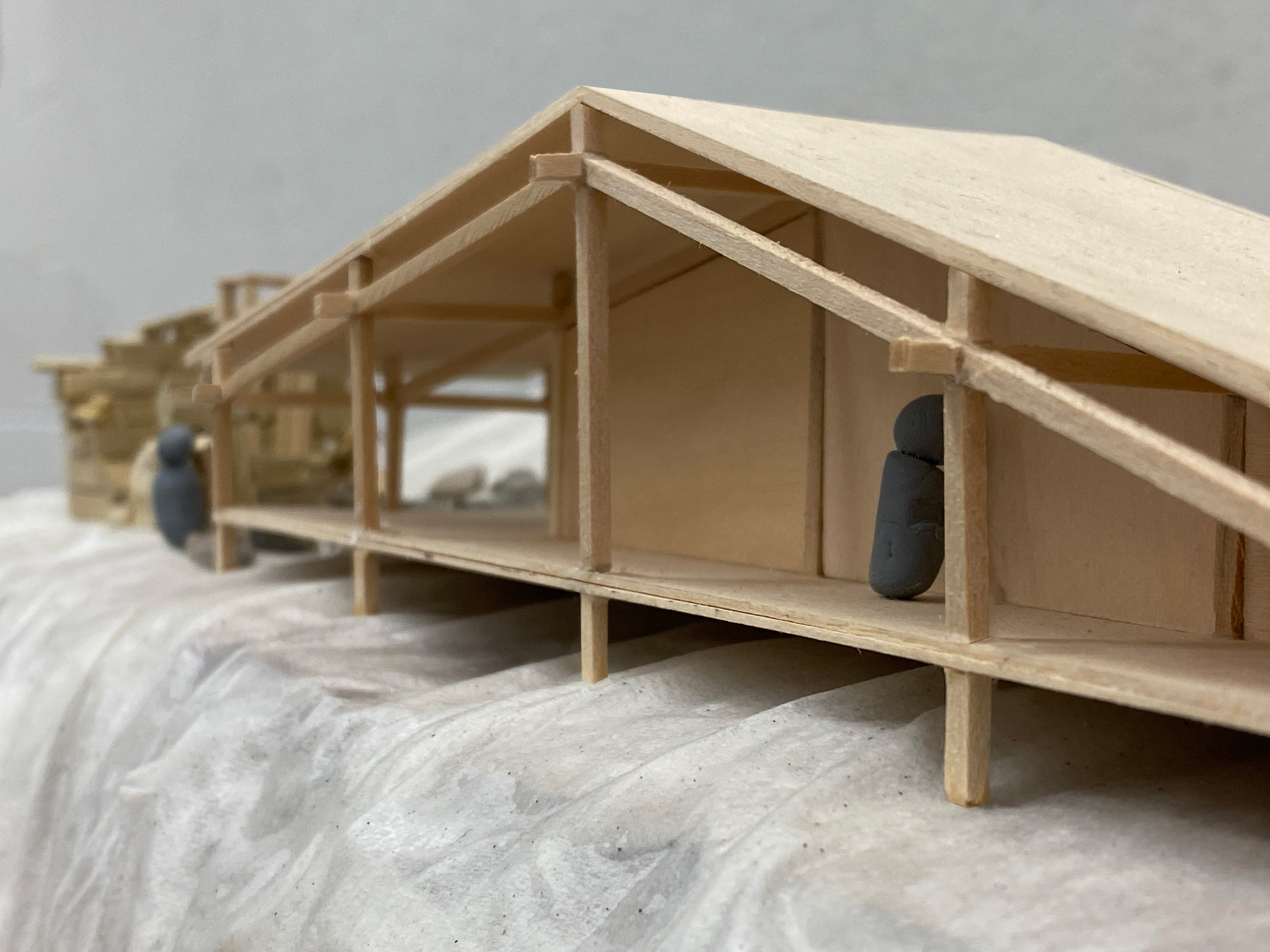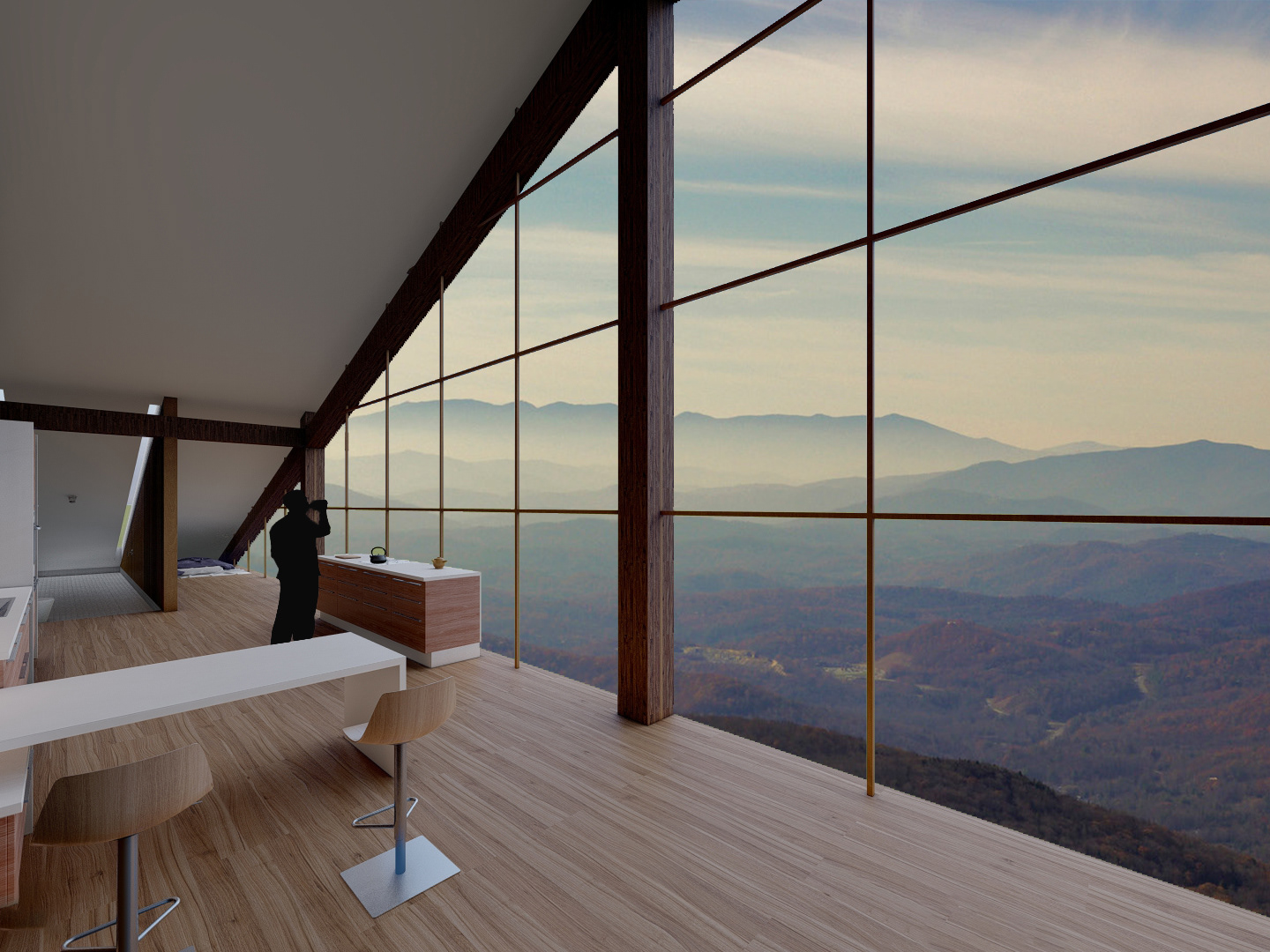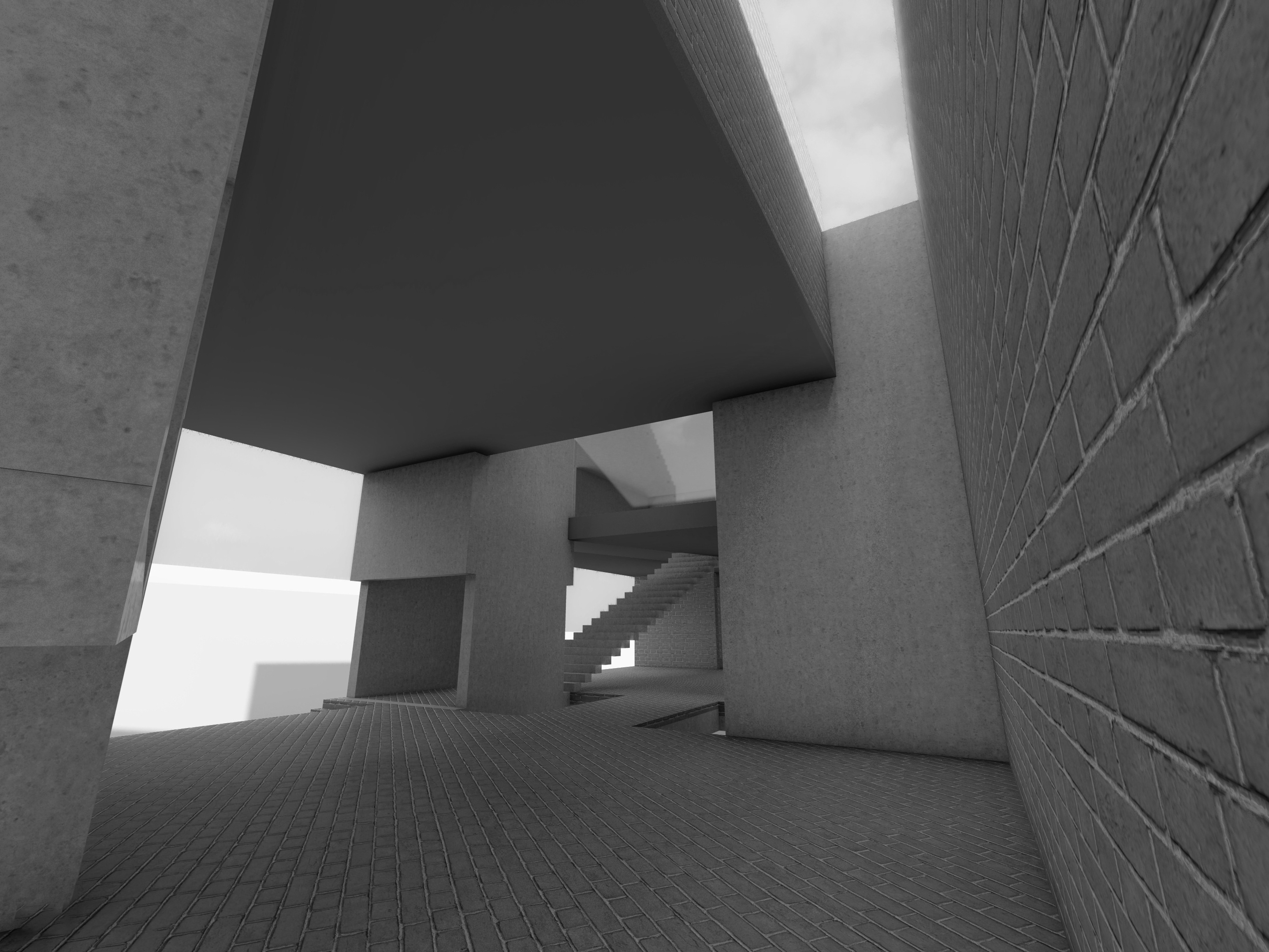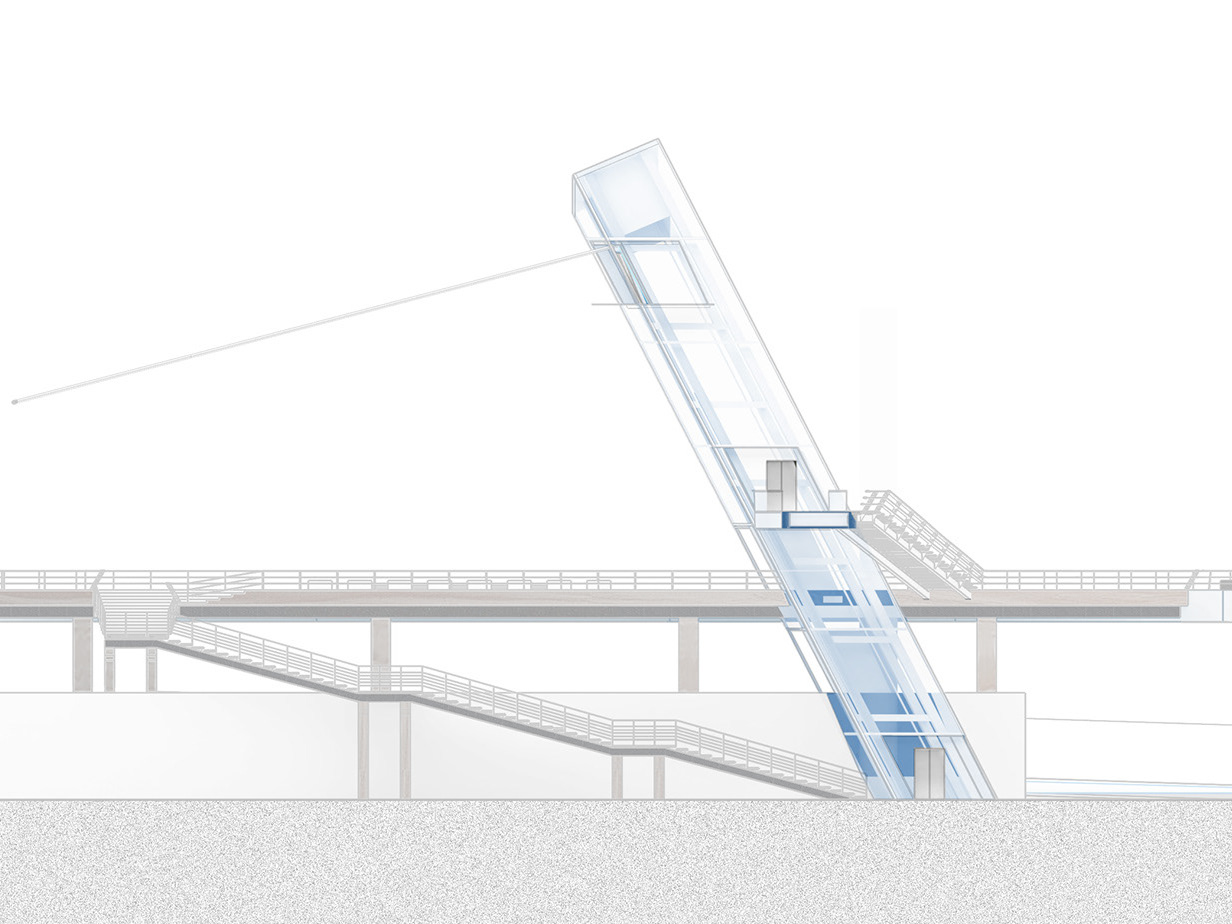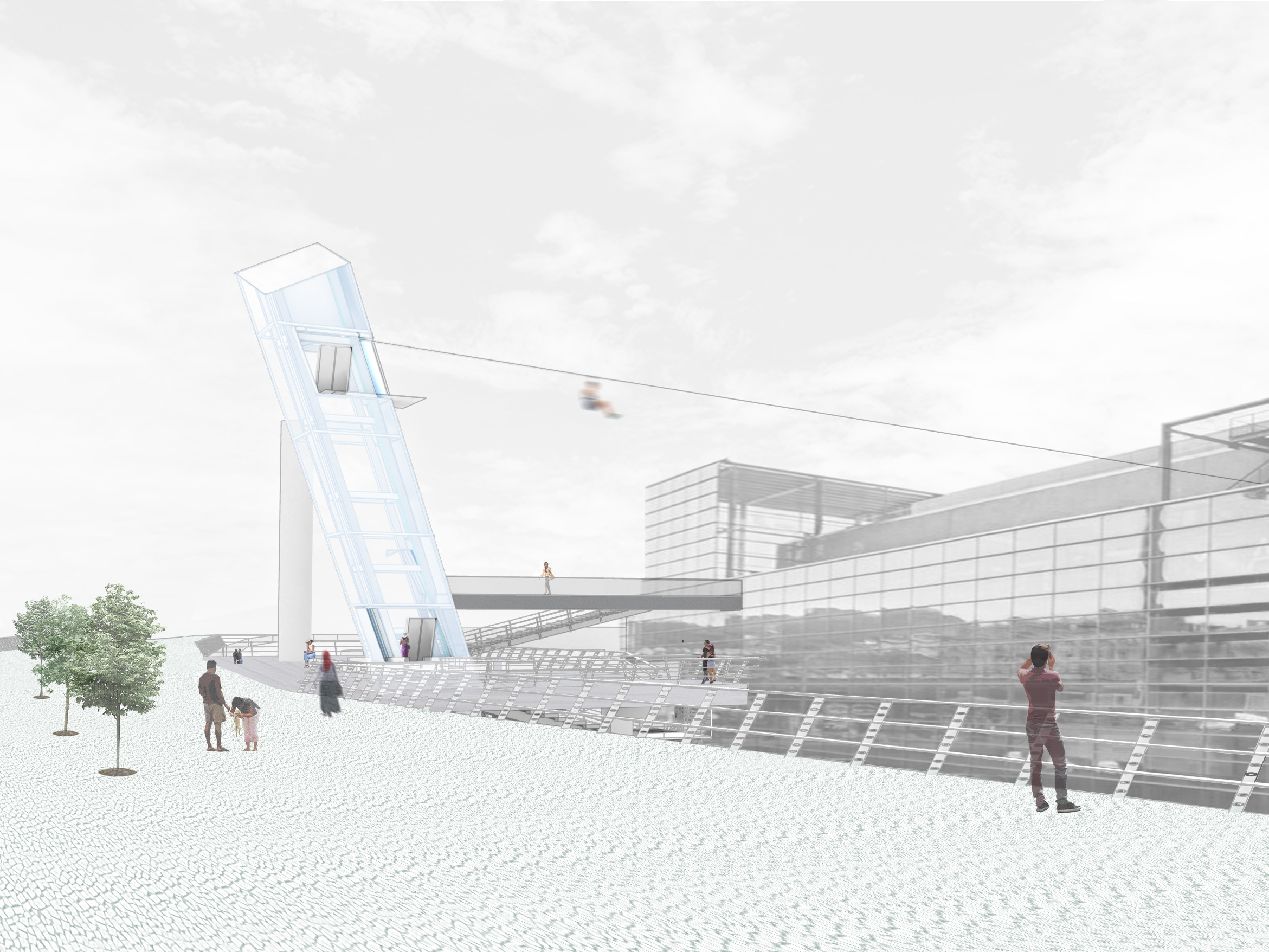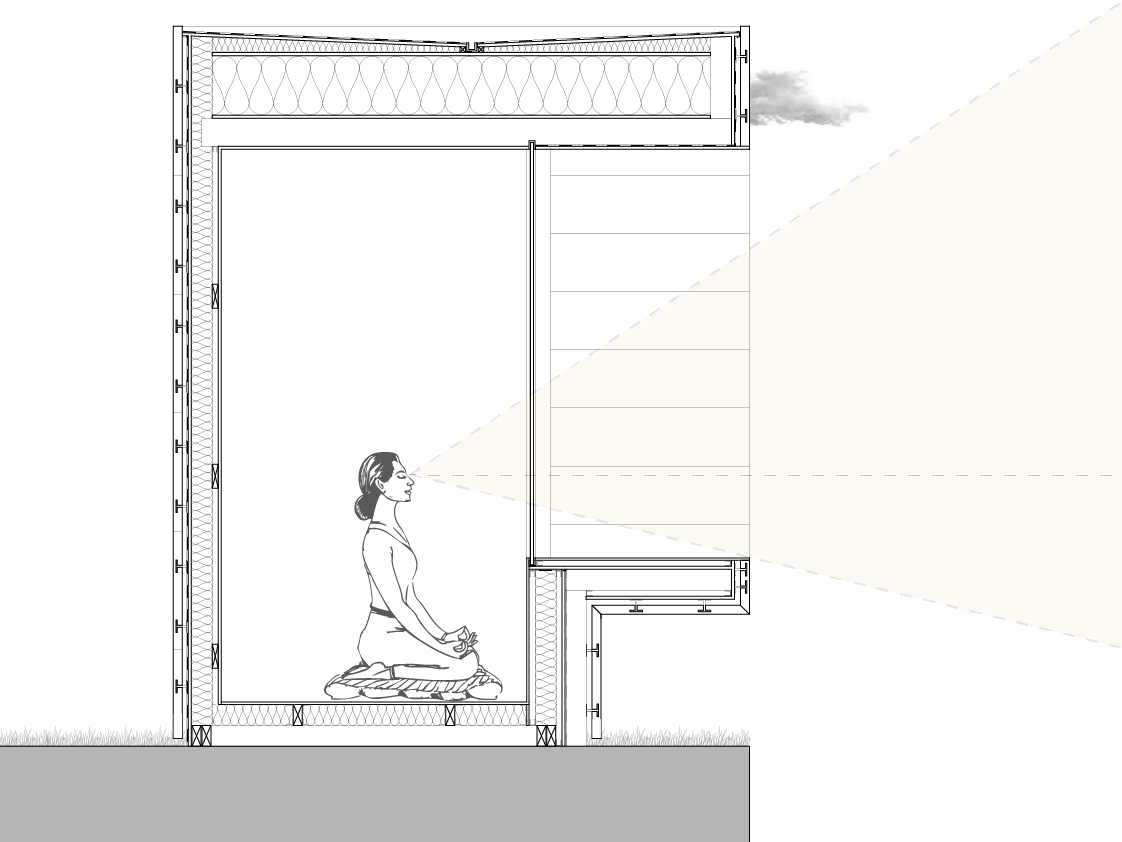Keywords-
Biophilia
Human Experience
Human Health Wellbeing
Neuroarchitecture
Neurourbanism
Utopian Architecture
Abstract- This paper presents a neurourbanism-based utopian and city design framework that prioritizes human experience and wellbeing. The discussion integrates neuroscientific insights to propose design elements that positively influence unconscious processes underlying human behavior and interaction with the urban setting. Drawing inspiration from Gropius’s perspective on utopias as an ideal reference for the future, this guide aims to enhance the design of utopian concepts, future cities, existing cities, and buildings by emphasizing the overall impact the built environment causes on overall health and experience.
1. Introduction
The English term "utopia" is derived from the Greek prefix 'eu' meaning good or happy, and 'topia' meaning place (Ricci, n.d.), suggesting the context of utopia is simply an idealized fantasy framework, meaning utopias cannot and will not exist. Instead, the perspective of this paper will reflect Gropius's perspective on utopia, displayed within his manifesto:
"A utopian, ideal future is the reference through which the presence is judged […] the perfect world, however, cannot be built in the present can only exist as an idea, to be fulfilled by the next generations." (Loureiro, 2014, p. 180)
With this perspective on utopias as an ideal reference for the future, this paper serves as a guide that aims to enhance the design of utopian concepts, future cities, existing cities, and buildings by emphasizing the impact on overall health and experience. By acknowledging the complexities of city dynamics, from relationships and networks to the flow of money and public and private spaces, this guide aims to steer the utopian experience rather than construct a utopia itself.
This human experience-focused guide will be founded on current knowledge within neurourbanism and associated disciplines. Within cognitive neuroscience, the underlying process of human behavior is usually split into two categories: conscious processes and unconscious processes. Conscious processes occur when we ask for one's preferences, such as likes or dislikes, contributing to what makes us unique. On the other hand, the unconscious process is our automatic response to the built environment based on deep structures in the brain and body, which we all share.
Based on the belief that the underlying processes make up the conscious experience, emphasis is placed on factors influencing unconscious processes, considering architecture and the urban environment as a backdrop within the context of influencing human experience and health.
While guides are usually suggestions, it is worth noting that, as mentioned in Gropius's manifesto, making compromises will only kill ideas. Despite this, acknowledgment of the gradual nature of societal change must be maintained.
2. Historical Context
Historically, utopian concepts have been flawed by the obsession with symmetry and perfection, leading to a desire for absolute control over every aspect of life (Ritchie & Pearman, 2016). The Renaissance Ideal City exemplifies this flaw with its meticulously planned layout based on geometric principles such as following the established grid, golden ratio, and Euclidean geometry (Ricci, n.d.).
The flaw lies in architects’ tendencies to cultivate their title as idealists, creating abstract solutions for practical needs, detaching them from reality, and allowing engineers to assume the role of problem solvers (Loureiro, 2014). Modern-day architects continue to follow this trend when attempting to reclaim the beauty of art within cities, as prominent individuals within the architectural scene view modern cities as an architectural desert lacking true beauty (Ricci, n.d.). This paper advocates for a balance between architectural expression and practical functionality, emphasizing the need for architects to master machinery (Loureiro, 2014) and technology (Benton, 1934).
2.1 Poor Examples
Some well-known utopian concepts, such as Le Corbusier’s Radiant City and Richard Neutra’s Rush City Reformed, showcase ambitious goals but falter in execution. Despite designing with the intention of improving human experience (Kohlstedt, 2018; Koglek, n.d.; Rush City Reformed, n.d.), the usage of straight lines (eventually crossing creating a grid), orthogonal blocks, and massive concrete structures may not only create unpleasant experiences but also pose health risks. The paper argues that the execution of utopian ideals must consider the unconscious processes that influence human behavior.
2.2 Better Examples
Unlike other utopian concepts previously stated in the “poor examples” section, utopian cities designed with a biophilic mindset, such as Letchworth Garden City, Arcosanti, and Frank Lloyd Wright’s proposals, offer better examples. These concepts demonstrate more successful executions of prioritizing human experience and well-being by integrating nature into the urban environment.
The success of Letchworth and Arcosanti, demonstrated by cities/towns being wholly built according to these concepts, showcases the viability of these approaches (Britannica & Encyclopaedia, 2022; Ricci, n.d.). Frank Lloyd Wright’s emphasis on establishing a harmonious balance between nature and the built environment further contributes to the discussion on better utopian design practices (Siddhpura, n.d.).
3. Design Principles
For the purposes of this discussion, the phrase 'urban context' will be delineated as a complex, multifaceted composition encompassing buildings, urban traffic, and more. Cognitively, the urban environment poses greater demands than natural landscapes. The objective in crafting the desired utopian experience is to minimize potential mental exhaustion or, conversely, to stimulate the brain positively, guided by scientific data (Ancora, 2022).
3.1 Affordances
To maximize human interaction and experience within the built environment, the constructed framework of said environment should embody the concept of affordances, a term pioneered by James J. Gibson, denoting the behavioral possibilities a physical environment offers (Gibson, 1977). When applied to the urban context, affordances emphasize the alignment between an individual's physical attributes, skills, and movement capabilities and the environment's action-related characteristics (Clark, 1999). Every designable aspect should strive to enhance affordances within the built environment, fostering increased interaction and contributing to overall well-being while accommodating neuroplasticity0F0F1 (Evans, 1992; Paiva, 2023).
3.1.1 Architectural Affordances
Architectural affordances, as demonstrated by Djebbara, play a crucial role in shaping human perception and positively influencing behavior in the built environment:
"When we act, we change the perceived environment according to a set of expectations that depend on our body and the environment. The potential ways we can act depend on the affordances of the environment […] Affordances are thus perceptual and action-related expectations that are systematically reflected in sensorimotor dynamics. In this sense, cognitive functions that depend on sensory or motor activity are not bound by the physical structure of the body alone, but also by the functional ways in which we interact with the environment." (Djebbara, 2023).
Augmenting architectural affordance leads to positive experiences and should be a central consideration in utopian design.
Figure 1: Djebbara’s work (2022, p. 7, Fig 4) provides an overview of how urban structures influence sensory-motor responses (SMRs). The following sections elaborate on this concept by including an example of isovist simulations on Nolli (isometric) maps.
(A) Maps of New York City, USA, and Copenhagen, Denmark. This visual representation emphasizes the significant disparity between the two layouts, alluding to the potential difference in the frequency of sensory information during a stroll through.
(B) “This graph depicts the amount of novel sensory information collected in New York City (blue) and Copenhagen (yellow). For New York City, the novelty is initially flat until turning a corner elicits a short, high burst of new sensory information before coming out again. Copenhagen displays a slow but constantly increasing amount of information with much longer corners for collecting sensory information. The urban structures offer distinct EFs (environmental features). The (brown) dashed areas in the background display where the features differ” (Djebbara, 2022, pg. 7, Fig 4).
(C) This series of graphics depicts a chain of space syntax analysis of New York City, the blue area displaying the visibility of the urban space from a point in a 2D view (2D isovist)
(D) This series of graphics depicts a chain of space syntax analyses of Copenhagen. The orange area displays the visibility of the urban space from a point in a 2D view, represented as a 2D isovist.
(A) Maps of New York City, USA, and Copenhagen, Denmark. This visual representation emphasizes the significant disparity between the two layouts, alluding to the potential difference in the frequency of sensory information during a stroll through.
(B) “This graph depicts the amount of novel sensory information collected in New York City (blue) and Copenhagen (yellow). For New York City, the novelty is initially flat until turning a corner elicits a short, high burst of new sensory information before coming out again. Copenhagen displays a slow but constantly increasing amount of information with much longer corners for collecting sensory information. The urban structures offer distinct EFs (environmental features). The (brown) dashed areas in the background display where the features differ” (Djebbara, 2022, pg. 7, Fig 4).
(C) This series of graphics depicts a chain of space syntax analysis of New York City, the blue area displaying the visibility of the urban space from a point in a 2D view (2D isovist)
(D) This series of graphics depicts a chain of space syntax analyses of Copenhagen. The orange area displays the visibility of the urban space from a point in a 2D view, represented as a 2D isovist.
3.2 Utopian Layout
3.2.1 Pods
When considering layouts, organizing cities into “pods” that encompass essential services promotes social cohesion, but segregating spaces around the pod is crucial. The separation of spaces forces individuals to travel for daily necessities, promoting transitioning between environments for all necessities, positively contributing to our overall health and well-being.
3.2.2 Grid vs Organic
The city’s layout is proposed to favor organic structures over grid-like arrangements. Insights from Djebbara’s research suggest that gentler, more natural transitions in the city’s layout, as seen in cities like Copenhagen, can reduce cognitive demands on the sensorimotor cortex. More abrupt turns of a gridded city, such as New York City, result in more demand on the sensorimotor cortex, which may influence our sensorimotor responses to the built environment (Djebbara, 2022).
This concept should be persistent throughout the city’s layout to enhance the spatial transition around a corner, incorporating 2D isovist (Figure 1, C&D). While the long-term effects of experiencing gridded and organic layouts are unknown, predictions may favor gridded cities being more taxing on the sensorimotor cortex, especially as the brain ages.
3.2.3 Manipulation of Optical Flow of Sensory Information
Cities have a long history of exploiting the manipulation of the optical flow of sensations in everyday experience within the urban context; a fantastic example can be found in research conducted by Garach et al. (2022). This example studied the effects of driving speed perception by altering the width of longitudinal road markings, consequently narrowing the lane. Despite not having a drastic numeric influence on the lane width, this simple adjustment causes drivers to perceive their speed as much more significant than reality, resulting in participants slowing down. A similar effect can be found when adjusting the length of patterned road markings, such as dashed lines (Garach, 2022).
This tactic of modifying the distance between road markings can be found on the windy roads along the east coast of Lake Michigan. These roads grant amazing views of the Chicago skyline. However, this view caused numerous fatalities. However, these fatalities decreased after decreasing the distance between the stripes in the middle of the road without using speedbumps, rumble strips, etc. (Thaler, 2021).
Another example of how the optic flow of sensory information can be manipulated to achieve a desired outcome is that Ludwig et al. performed a study projecting horizontal lines onto the floor in consistent succession of each other. Participants were asked to walk down the walkway where the repetition of lines was projected while being asked to perform a perceptual discrimination task involving the orientation of a bar on the back wall, pushing the projected lines into the realm of their unconscious. Results found that the closer the distance between the repetition of lines, the slower the participants walked, and the opposite also occurred: the greater the distance between the repetitive lines, the faster they unconsciously walked.
This research can be used overhead with strings of lights, slits in the ceiling, etc. to achieve desired walking speeds. Slowing down walking speeds for where we want people to absorb the atmosphere.
Cities that do not use these tactics or take advantage of other methods of positively manipulating the optical flow of sensory information must, as the results consist of increased safety, navigation, and a favorable milieu (Alefantis, 2022).
4. Navigation
Enhancing navigability through the city layout is crucial for a more positive experience and ease of access, resulting in lower stress levels. The discussion encompasses visual cues, strategies for self-orientation, and various navigational behaviors. (Bécu, 2020; KÜÇÜK, 2022; Parra-Barrero, 2023).
An additional reason regarding the importance of exemplifying the navigability of a city is the avoidance of a phenomenon called disorientation stress or spatial unease, caused by being un-orientated in an environment or not knowing a layout, which becomes a source of stress (Jeffery, 2019) which too much and for too long of a duration negatively contributes to our health and performance (American Psychological Association, 2023; Yerkes & Dodson, 1908).
3.2.4.1 Visual cues
Intensifying the ability to self-orient involves understanding two types of visual cues: geometric and landmark (which are also used in navigation).
Geometric cues elucidate the relationship between surrounding large-scale surfaces, such as building walls, sidewalks, or a nearby park (Bécu, 2020); landmark cues refer to the featural context of those surfaces or objects in the environment that can be used as a point of reference, such as shop signs and street signs (Sheynikhovich, 2009). Both cue types are recommended when designing, but the suggested ratio uses more landscape cues. Having environments more dependent on landscape cues may foster the development of landmark cue utilization in children at an early age, potentially reducing the likelihood of disorientation as they age.
The possibility of reducing disorientation within aging adults stems from research displaying this population heavily relying on geometric cues (Ramanoël, 2020). Humans tend to favor geometric cues (as seen in children); therefore, developing the opposite skillset may be more beneficial in the long run. Similar to learning how to do everything with your left hand if you are right-handed, and vice versa, at a young age.
If some specific design aims to heighten navigation and orientation, symmetry should be deliberately avoided. Symmetrical spaces look identical when only geometric cues are used to analyze space, explaining why aging individuals consistently get lost in symmetrical buildings.
Figure 2: Two cognitive strategies (Egocentric and allocentric processes) of navigation (Catapult et al., p. 97).
3.2.4.2 Orientating Ourselves for Navigation
We have to orient ourselves when navigating, and two main strategies are used: egocentric (route-based) and allocentric (map-based), as shown in Figure 2 (Catapult, Centric Lab, University College London).
Egocentric processes involve navigating based on our body as a point of reference, using the parietal3F4 and frontal brain areas, and relying on signs and symbols for orientation. Individuals who are visually impaired also
Allocentric processes navigate through object-to-object relations, employing the occipital and temporal areas and maintaining dependency on global compass information for orientation (Rooney, 2017; KÜÇÜK, 2022).
Although anyone can employ various orientation methods, individuals with specific conditions, such as visual impairments, use egocentric processes and would benefit from solutions such as route-based cities (Catapult, Centric Lab, University College London). Cities should integrate ample signage and maps covering sidewalks, parks, trails, public systems, etc., particularly in areas where navigability may pose challenges. These precautions enable inhabitants to create proper cognitive maps, creating a more positive overall urban experience. Additionally, designing wider streets enhances the ease of finding directions (KÜÇÜK, 2022).
3.2.4.3 Types of Navigation
In this segment, spatial navigation is defined as “the processes of determining and maintaining a course from one spatial location to another, irrespective of the intervening distance or medium of travel” (Parra-Barrero, 2023). This definition distinguished five distinct navigation behaviors: Aiming, Direction field navigation, Path following, Vector movement, and Guidance. Based on these distinguished forms of navigation, metric navigation, involving self-localization within a map, offers flexible navigation (Parra-Barrero, 2023).
Similar to the previous section, incorporating the metric system includes instilling effective navigational systems for the blind and other forms of handicap.
Figure 3: (Paiva, 2023) Environmental Stressors
4. Social and Environmental Considerations
4.1 Drawbacks of Urban Living
Urban living is often tethered with the increase in poor mental health as well as chronic physical illness, with stress being identified as a possible central mediator (Selten, 2018).
4.1.1 Social Stressors
Research investigating the impact of urban upbringing on stress levels, measured through brain activity and its link to social stress regulation, revealed significant step-ups between various populations from rural areas, small towns, and cities. Participants raised in urban environments exemplified heightened activity in the peri-genual anterior cingulate cortex, whereas participants raised in rural environments exhibited the lowest levels of activity (Lederbogen, 2011). Related to stress levels, cooperability has also been identified among participant upbringings. Individuals raised in more urban environments tend to be less cooperative. In contrast, individuals with more rural upbringing exhibited higher cooperability, leading to increased trust and positive feedback, as seen with decreased activity with the left amygdala (Lemmers-Jansen, 2020).
Spaces facilitating social interaction contribute positively to mental well-being, emphasizing the importance of planning interconnected and inclusive communities (Berg, 2020). Environments lacking these social attributes develop toward social isolation, increasing not only stress levels but also risk factors for coronary heart disease and strokes (Valtorta, 2016).
Urban upbringing has also been found to alter gene patterns, potentially influencing cerebral responses and contributing to adulthood neuropsychiatric disorders associated with the dopaminergic system and reward circuitry, such as Parkinson’s disease (Reed, 2018).
4.1.2 Environmental Stressors
To create a health-conscious environment, mitigating environmental stressors, especially the ones present every day but go unnoticed, is essential. The four main stressors contributing to various illnesses and mental health issues include noise, heat, light, and air pollution (Catapult, Centric Lab, University College London); more stressors can be found in Figure 3.
Noise pollution poses a threat to cognitive health, leading to decreased productivity, increased headaches (DPhil, 2006), blood pressure and arterial hypertension, obesity, and heightened levels of stress, particularly in children obesity (Dean, 2020), heightened levels of stress particularly in children (DPhil, 2006), and individuals with autism spectrum disorder (ASD), who may be more sensitive to sound (Kanakri, 2017). Limiting noise pollution in urban areas, including transportation) Moreover, construction sites are crucial (Catapult, Centric Lab, University College London).
Light pollution, emitted by lights that are on 24/7, adversely affects human health by disrupting circadian rhythms, resulting in lower-quality sleep, sleep disorders, depression, anxiety disorders, cardiovascular disease, and even cancer (Chepesiuk, 2009). Motion-based lighting, including streetlights, that becomes enabled after a set time can help mitigate these effects.
Air pollution, a widespread issue within cities globally, exposes individuals to harmful substances. Improper air quality, some even derived from building materials (Kampa, 2007), contributes to neurological and cognitive impairments such as asthma and cardiovascular (Marshall, Brauer, & Frank, 2009), neurodevelopment (Torres-Jardón, Kulesza, Park, & D'Angiulli, 2014), anxiety, depression, concentration problems in both children and adults (Kampa, 2007), and cognitive decline (Weuve, 2013).
Traffic in all cities is attributed to poor air pollution. However, the quality of the city's infrastructure (such as clarity of signage, quality of roads, and effectiveness of distribution of services (Catapult, Centric Lab, University College London)) reflects the amount of air pollution caused by traffic. The created air pollution becomes trapped within the cities, altered air circulation caused by non-permeable surfaces (National Center for Atmospheric Research, 2011), and lack of green spaces (Zupancic, Westmacott, & Bulthuis, 2015).
A potential modern-day solution involves enclosing a city in a dome and implementing air purification methodologies (Allowing clean air to enter and dirty air to exit) alongside integrating greenery.
4.2 Biophilia
Steven Kaplan, recognized for introducing the term "biophilia," constructed the Attention Restoration Theory (ART), which incorporates nature into the design (Kaplan, 1989), guided by the 14 principles (Browning, Ryan, & Clancy, 2014).
4.2.1 Benefits of Exposure to Nature
The positive impact of exposure to nature on health and well-being is well-established. Studies consistently demonstrate improvements in mental, physical, physiological, and cognitive health and reduced symptoms of neurophysiological diseases (Nejade et al., 2022). In urban settings, interaction with nature reduces stress and anxiety levels and lowers activity levels of the autonomic nervous system (ANS), displaying strong relaxation responses (Anderson, 2017). Intriguingly, this interaction also heightens activity within the amygdala, the brain region associated with empathy and love (Ledoux, 2008).
While the environmental incorporation of nature can be as simple as introducing outdoor plants for positive olfactory and visual experiences (Kellert, 2013), maximizing the potential benefits requires a nuanced analysis of how nature is exposed. For instance, time spent in parks correlates with tree density, and preferences lean toward avoiding overwhelming canopy densities (Higuera-Trujillo, 2021; Wang, 2020). Creating medium-to-high complexity fractal light patterns has been known to be more appealing to humans than other patterns (Kellert, 2013).
Integrating “wild” urban nature, or nature shaped through human intervention such as human-built gardens, tends to be more desirable than untouched wilderness (Zhang, 2019). These elements should be found more often in public places such as parks, roadsides, footpaths, etc. (KÜÇÜK, 2022). Recognizing the importance of the quality and quantity of natural elements is crucial for the thoughtful incorporation of biophilic elements.
4.2.1.1 Case Study: Verticality
An often-overlooked aspect in biophilic design, especially within cities/the urban context, is the impact of amounts of nature at different building heights. In a notable experiment by Olszewska-Guizzo et al., they conducted a study focusing on participants’ pleasure and perception of nature at various levels (See the variations in used scenes, percentage of nature, and floor levels can be found in Figure 5), measured through electroencephalogram (EEG) readings of alpha and beta responses in conjunction with activity in the left and right brain hemisphere. Increased right frontal alpha power indicated positive attitudes toward the scene, while increased left frontal alpha power indicated negative attitudes (Olszewska-Guizzo).
The average building proposal would be mixed-use, with the bottom half of ten building floors dedicated to non-residential space. This proposal stems from the high negative readings, which are usually either higher or near equivalent to the positive readings. The only exceptions would be lower levels (3-5) with extremely high natural coverage.
According to the data (shown in Figure 6, underneath), the amount of nature should be placed with thoughts of visibility from a distance. Positive readings were highest on the 24th floor, and the negative readings for the 24th floor may be slightly off, as fear of heights was not observed, which may contribute to a negative experience.
Figure 5 (Below): Five Photos of views used in the study (Olszewska-Guizzo, p. 6). Column 1 (B1-B12): Used to recognize the mixture between columns 2 and 3. Column 2 (F3-F24): Representing floor heights, F3 = Third floor, F12 = Twelfth Floor. Column 3 (minimal – high): Amount of green coverage in representations. Minimal (<20%), medium (30-40%), and high (>50%)
Figure 6: Six diagrams showing the focus of alpha power levels compared to what participants saw (Olszewska-Guizzo, p. 9). The x-axis references column one of Figure 3; the y-axis displays the estimated marginal means of right frontal alpha power (AF3, F3/ AF4, F4)
4.3 Embodied Experiences
Embodied experiences, characterized by mindful and bodily interactions with our surrounding environment, facilitated through affordances, play a pivotal role in forming meaningful experiences (Evans, 1992).
This emphasis on all relevant senses—sight, hearing, smell, and touch—contributes to diversifying the utopian experience and distinguishing it from other experiences (Myers, 2020).
In urban landscapes within close proximities to bodies of water, such as oceans, lakes, or streams, a profound sense of calmness, comfort, and privacy is evoked, thereby reducing stress levels while increasing the sense of belonging (Yan, 2019). This response resembles the soothing effects commemorated by fountains and pools, creating sensory parallels to natural aquatic environments.
Recalling scents is an effective method of establishing an emotional connection with the city (Ledous, 2008), exploiting the role of the Amygdala in memory, especially recalling old smells, such as childhood smells.
5. Challenges and Critiques
Challenges may entail difficulties incorporating all of these aspects and leaving the utopian layout modular “pods,” allowing for implementing future findings. This could be completed through the pod concept, especially if each pod has its own substructure. This pod concept may be viable, especially if there are only a few predetermined shapes that pods may form.
Extensive research is imperative on this subject, considering our need for more understanding regarding the potential detrimental effects of our existence within current urban environments and housing structures. This exploration is only the tip of the iceberg, and this knowledge is not merely a luxury but a human necessity.
A particular example of criticism against contemporary cities is articulated in Georg Simmel’s Essay “Metropolis and Mental Life,” featured in the book Metropolis: Center and Symbol of Our Times (pp. 31-32).
References
Alefantis, P. (2022). Sensory Evidence Accumulation Using Optic Flow in a Naturalistic Navigation Task. Journal of Neuroscience. doi:https://doi.org/10.1523/JNEUROSCI.2203-21.2022
American Psychological Association. (2023, March 8). Stress effects on the body. Retrieved from https://www.apa.org/topics/stress/body
Ancora, L. A. (2022). Cities and neuroscience research: A systematic literature review. University of Lisbon, Lisbon School of Medicine. Lisbon, Portugal: Frontier. doi:10.3389/fpsyt.2022.983352
Anderson, A. (2017). Relaxation with Immersive Natural Scenes Presented Using Virtual Reality. doi:10.3357/AMHP.4747.2017
Bécu, M. (2020). Age-related preference for geometric spatial cues during real-world navigation. Nature Human Behaviour. doi:https://doi.org/10.1038/s41562-019-0718-z
Benton, T. (1934). Architecture and Design, 1890-1939: An International Anthology of Original Articles. In M. Breuer, Where do we Stand? (pp. 178–183). New York City: Pearson; 1st edition.
Berg, K. (2020, 10 04). Healthy City. Retrieved from deutschland.de: https://www.deutschland.de/tr/topic/cevre/saglikli-kentler-nero-sehircilik-arastirma-dalinin-hedefi
Britannica, & Encyclopaedia, T. E. (2022). garden city. Britannica. Retrieved from https://www.britannica.com/topic/garden-city-urban-planning.
Browning, W., Ryan, C., & Clancy, J. (2014). 14 Patterns of Biophilic Design: Improving Health & Wellbeing in the Built Environment. New York City: Terrapin Bright Green.
Catapult, Centric Lab, University College London. (n.d.). Neuroscience: A Playbook for Placemakers. London.
Chepesiuk, R. (2009). Missing the Dark: Health Effects of Light Pollution. doi:https://doi.org/10.1289/ehp.117-a20
Cherry, K. (2022, November 08). What is Neuroplasticity? Retrieved from verywellmind: https://www.verywellmind.com/what-is-brain-plasticity-2794886
Clark, A. (1999). An embodied cognitive science? (Vol. 3). Trends in Cognitive Sciences. doi:https://doi.org/10.1016/S1364-6613(99)01361-3
Cleveland Clinic. (n.d.). Frontal Lobe. Retrieved from Cleveland Clinic: https://my.clevelandclinic.org/health/body/24501-frontal-lobe
Dean, J. T. (2020). Noise, cognitive function, and worker productivity. University of Chicago, School of Business. Retrieved from https://economics.mit.edu/files/13747
Djebbara, Z. (2021). The brain dynamics of architectural affordances during transition. Aalborg University, Department of Architecture, Design, Media, and Technology. Aalborg, Denmark: Scientific Reports. doi:10.1038/s41598-021-82504-w
Djebbara, Z. (2022). Neuroscience and architecture: Modulating behavior through sensorimotor responses to the built environment. Aalborg University, Department of Architecture, Design, Media, and Technology. Aalborg, Denmark: ScienceDirect. doi:10.1016/j.neubiorev.2022.104715
Djebbara, Z. (2023). Expecting Space: A Neuroscientific Study of Architectural Transitions. ANFA ACE Meeting #10.
Djebbara, Z. (2023, September). Interviewing Zakaria Djebbara. (G. Ryan, Interviewer)
DPhil, P. R. (2006). Noise as a Trigger for Headaches: Relationship Between Exposure and Sensitivity. doi:https://doi.org/10.1111/j.1526-4610.2006.00468.x
Ellard, C. (2020). Neuroscience, Wellbeing, and Urban Design: Our Universal Attraction to Vitality. University of Waterloo, Department of Psychology. doi:10.7454/proust.v3i1.81
Errett, J. (2006). Effects of Noise on Productivity: Does Performance Decrease Over Time? University of Nebraska, Lincoln. Retrieved from https://digitalcommons.unl.edu/archengfacpub/13/
Evans, J. (1992). Imminence and immanence: embodied meaning in architectural experience.
Garach, L. (2022). The effect of widening longitudinal road markings on driving speed perception. University of Granada, Department of Civil Engineering. Granada: ScienceDirect. doi:https://doi.org/10.1016/j.trf.2022.05.021.
Geido, J. N. (2002). Adolescent Brain Maturation. (V. Ramachandran, Ed.) Academic Press. doi:https://doi.org/10.1016/B0-12-227210-2/00388-5.
Gibbons, S. (2019). Cognitive Maps, Mind Maps, and Concept Maps: Definitions. Nielsen Norman Group. Retrieved from https://www.nngroup.com/articles/cognitive-mind-concept/
Gibson, J. J. (1977). The Theory of Affordances. In R. Shaw, Perceiving, Acting, and Knowing: Toward an Ecological Psychology (pp. 67–82). Lawrence Erlbaum; 1st edition.
Guo, L. (n.d.). Occipital Lobe. Retrieved from Osmosis: https://www.osmosis.org/answers/occipital-lobe
Higuera-Trujillo, J. L. (2021). The Cognitive-Emotional Design and Study of Architectural Space: A Scoping Review of Neuroarchitecture and Its Precursor Approaches. doi:https://doi.org/10.3390/s21062193
Jeffery, K. (2019). Urban Architecture: A Cognitive Neuroscience Perspective. The Design Journal. doi:10.1080/14606925.2019.1662666
Kampa, M. (2007). Human health effects of air pollution. doi:https://doi.org/10.1016/j.envpol.2007.06.012
Kanakri, S. M. (2017). Noise and autism spectrum disorder in children: An exploratory survey. Research in Developmental Disabilities. doi:https://doi.org/10.1016/j.ridd.2017.02.004.
Kaplan, R. (1989). The experience of nature: A psychological perspective. Cambridge University Press.
Kawabata, R. (2023, May 19). The Anterior Cingulate Cortex is Critical for Acute Stress-induced Hypersensitivity in Mice. doi:10.1016/j.neuroscience.2023.05.010
Kellert, S. R. (2013). Biophilic Design: The Theory, Science and Practice of Bringing Buildings to Life.
Koglek, N. (n.d.). Introduction to Richard Neutra and Rush City Reformed. Retrieved from UTOPICUS: https://utopicus2013.blogspot.com/2013/07/introduction-to-richard-neutra-and-rush.html
Kohlstedt, K. (2018). Ville Radieuse: Le Corbusier's Functionalist Plan for a Utopian "Radiant City". 99% Invisible.
Kostrzewska, M. (2017). Activating Public Space: How to Promote Physical Activity in Urban Environment. doi:10.1088/1757-899X/245/5/052074
KÜÇÜK, S. G. (2022). Neuroscience and the Cities: Neurourbanism. Istanbul, Turkey. doi:10(3): 287-301
Lederbogen, F. (2011). City living and urban upbringing affect neural social stress processing in humans. Nature. doi:https://doi.org/10.1038/nature10190
Ledous, J. E. (2008). Cognitive-Emotional Interactions in the Brain. doi:https://doi.org/10.1080/02699938908412709
Ledoux, J. E. (2008). Cognitive-Emotional Interactions in the Brain. doi:https://doi.org/10.1080/02699938908412709
Alefantis, P. (2022). Sensory Evidence Accumulation Using Optic Flow in a Naturalistic Navigation Task. Journal of Neuroscience. doi:https://doi.org/10.1523/JNEUROSCI.2203-21.2022
American Psychological Association. (2023, March 8). Stress effects on the body. Retrieved from https://www.apa.org/topics/stress/body
Ancora, L. A. (2022). Cities and neuroscience research: A systematic literature review. University of Lisbon, Lisbon School of Medicine. Lisbon, Portugal: Frontier. doi:10.3389/fpsyt.2022.983352
Anderson, A. (2017). Relaxation with Immersive Natural Scenes Presented Using Virtual Reality. doi:10.3357/AMHP.4747.2017
Bécu, M. (2020). Age-related preference for geometric spatial cues during real-world navigation. Nature Human Behaviour. doi:https://doi.org/10.1038/s41562-019-0718-z
Benton, T. (1934). Architecture and Design, 1890-1939: An International Anthology of Original Articles. In M. Breuer, Where do we Stand? (pp. 178–183). New York City: Pearson; 1st edition.
Berg, K. (2020, 10 04). Healthy City. Retrieved from deutschland.de: https://www.deutschland.de/tr/topic/cevre/saglikli-kentler-nero-sehircilik-arastirma-dalinin-hedefi
Britannica, & Encyclopaedia, T. E. (2022). garden city. Britannica. Retrieved from https://www.britannica.com/topic/garden-city-urban-planning.
Browning, W., Ryan, C., & Clancy, J. (2014). 14 Patterns of Biophilic Design: Improving Health & Wellbeing in the Built Environment. New York City: Terrapin Bright Green.
Catapult, Centric Lab, University College London. (n.d.). Neuroscience: A Playbook for Placemakers. London.
Chepesiuk, R. (2009). Missing the Dark: Health Effects of Light Pollution. doi:https://doi.org/10.1289/ehp.117-a20
Cherry, K. (2022, November 08). What is Neuroplasticity? Retrieved from verywellmind: https://www.verywellmind.com/what-is-brain-plasticity-2794886
Clark, A. (1999). An embodied cognitive science? (Vol. 3). Trends in Cognitive Sciences. doi:https://doi.org/10.1016/S1364-6613(99)01361-3
Cleveland Clinic. (n.d.). Frontal Lobe. Retrieved from Cleveland Clinic: https://my.clevelandclinic.org/health/body/24501-frontal-lobe
Dean, J. T. (2020). Noise, cognitive function, and worker productivity. University of Chicago, School of Business. Retrieved from https://economics.mit.edu/files/13747
Djebbara, Z. (2021). The brain dynamics of architectural affordances during transition. Aalborg University, Department of Architecture, Design, Media, and Technology. Aalborg, Denmark: Scientific Reports. doi:10.1038/s41598-021-82504-w
Djebbara, Z. (2022). Neuroscience and architecture: Modulating behavior through sensorimotor responses to the built environment. Aalborg University, Department of Architecture, Design, Media, and Technology. Aalborg, Denmark: ScienceDirect. doi:10.1016/j.neubiorev.2022.104715
Djebbara, Z. (2023). Expecting Space: A Neuroscientific Study of Architectural Transitions. ANFA ACE Meeting #10.
Djebbara, Z. (2023, September). Interviewing Zakaria Djebbara. (G. Ryan, Interviewer)
DPhil, P. R. (2006). Noise as a Trigger for Headaches: Relationship Between Exposure and Sensitivity. doi:https://doi.org/10.1111/j.1526-4610.2006.00468.x
Ellard, C. (2020). Neuroscience, Wellbeing, and Urban Design: Our Universal Attraction to Vitality. University of Waterloo, Department of Psychology. doi:10.7454/proust.v3i1.81
Errett, J. (2006). Effects of Noise on Productivity: Does Performance Decrease Over Time? University of Nebraska, Lincoln. Retrieved from https://digitalcommons.unl.edu/archengfacpub/13/
Evans, J. (1992). Imminence and immanence: embodied meaning in architectural experience.
Garach, L. (2022). The effect of widening longitudinal road markings on driving speed perception. University of Granada, Department of Civil Engineering. Granada: ScienceDirect. doi:https://doi.org/10.1016/j.trf.2022.05.021.
Geido, J. N. (2002). Adolescent Brain Maturation. (V. Ramachandran, Ed.) Academic Press. Doi:https://doi.org/10.1016/B0-12-227210-2/00388-5.
Gibbons, S. (2019). Cognitive Maps, Mind Maps, and Concept Maps: Definitions. Nielsen Norman Group. Retrieved from https://www.nngroup.com/articles/cognitive-mind-concept/
Gibson, J. J. (1977). The Theory of Affordances. In R. Shaw, Perceiving, Acting, and Knowing: Toward an Ecological Psychology (pp. 67–82). Lawrence Erlbaum; 1st edition.
Guo, L. (n.d.). Occipital Lobe. Retrieved from Osmosis: https://www.osmosis.org/answers/occipital-lobe
Higuera-Trujillo, J. L. (2021). The Cognitive-Emotional Design and Study of Architectural Space: A Scoping Review of Neuroarchitecture and Its Precursor Approaches. doi:https://doi.org/10.3390/s21062193
Jeffery, K. (2019). Urban Architecture: A Cognitive Neuroscience Perspective. The Design Journal. doi:10.1080/14606925.2019.1662666
Kampa, M. (2007). Human health effects of air pollution. doi:https://doi.org/10.1016/j.envpol.2007.06.012
Kanakri, S. M. (2017). Noise and autism spectrum disorder in children: An exploratory survey. Research in Developmental Disabilities. doi:https://doi.org/10.1016/j.ridd.2017.02.004.
Kaplan, R. (1989). The experience of nature: A psychological perspective. Cambridge University Press.
Kawabata, R. (2023, May 19). The Anterior Cingulate Cortex is Critical for Acute Stress-induced Hypersensitivity in Mice. doi:10.1016/j.neuroscience.2023.05.010
Kellert, S. R. (2013). Biophilic Design: The Theory, Science and Practice of Bringing Buildings to Life.
Koglek, N. (n.d.). Introduction to Richard Neutra and Rush City Reformed. Retrieved from UTOPICUS: https://utopicus2013.blogspot.com/2013/07/introduction-to-richard-neutra-and-rush.html
Kohlstedt, K. (2018). Ville Radieuse: Le Corbusier's Functionalist Plan for a Utopian "Radiant City". 99% Invisible.
Kostrzewska, M. (2017). Activating Public Space: How to Promote Physical Activity in Urban Environment. doi:10.1088/1757-899X/245/5/052074
KÜÇÜK, S. G. (2022). Neuroscience and the Cities: Neurourbanism. Istanbul, Turkey. doi:10(3): 287-301
Lederbogen, F. (2011). City living and urban upbringing affect neural social stress processing in humans. Nature. doi:https://doi.org/10.1038/nature10190
Ledous, J. E. (2008). Cognitive-Emotional Interactions in the Brain. doi:https://doi.org/10.1080/02699938908412709
Ledoux, J. E. (2008). Cognitive-Emotional Interactions in the Brain. doi:https://doi.org/10.1080/02699938908412709
Lemmers-Jansen, I. L. (2020). Trust and the city: Linking urban upbringing to neural mechanisms of trust in psychosis. Australian & New Zealand Journal of Psychiatry. doi:https://doi.org/10.1177/0004867419865939
Loureiro, F. (2014). The Revolutionary Mind of Walter Gropius: Architectural Utopias for the Machine Age. In F. Loureiro, The Revolutionary Mind of Walter Gropius: Architectural Utopias for the Machine Age (pp. 174–193). Penn State University Press.
Marshall, J. D., Brauer, M., & Frank, L. D. (2009). Healthy neighborhoods: walkability and air pollution. Environment Health Perspectives. doi:10.1289/ehp.0900595.
MAYFIELD. (n.d.). Anatomy of the Brain. Retrieved from MAYFIELD Clinic: https://mayfieldclinic.com/pe-anatbrain.htm
Merriam-Webster . (n.d.). Coronary. Retrieved from Merriam-Webster: https://www.merriam-webster.com/dictionary/coronary
Myers, Z. (2020). Wildness and Wellbeing: Nature, Neuroscience, and Urban Design. doi:10.1007/978-981-32-9923-8
National Center for Atmospheric Research. (2011, June 7). Air quality worsened by paved surfaces: Widespread urban development alters weather patterns. Science Daily. Retrieved from www.sciencedaily.com/releases/2011/06/110607121137.htm
Nejade, R. M., Grace, D., & Bowman, L. R. (2022). What is the impact of nature on human health? A scoping review of the literature. Imperial College London; Swansea Bay University Health Board, Department of Infectious Disease Epidemiology. London, UK: Journal of global health. doi:10.7189/jogh.12.04099
Olszewska-Guizzo, A. (n.d.). Window View and the Brain: Effects of Floor Level and Green COver on the Alpha and Beta Rhythms in a Passive Exposure EEG Experiment. National University of Singapore, Department of Architecture. Singapore: International Journal of Environmental Research and Public Health. doi:doi:10.3390/ijerph15112358
Paiva, A. D. (2023). Enriched Environments, Brain Plasticity and Spatial Design. ANFA ACE Meeting #10.
Parra-Barrero, E. (2023). A map of spatial navigation for neuroscience. Bochum, Germany: Neuroscience & Biobehavioral Reviews. doi: https://doi.org/10.1016/j.neubiorev.2023.105200.
Queensland Government. (2022, July 12). Brain Map: Temporal Lobes. Retrieved from Queensland Health: https://www.health.qld.gov.au/abios/asp/btemporal_lobes#:~:text=The%20temporal%20lobes%20sit%20behind,with%20the%20encoding%20of%20memory.
Ramanoël, S. (2020). Differential Brain Activity in Regions Linked to Visuospatial Processing During Landmark-Based Navigation in Young and Healthy Older Adults. Frontiers Psychology. doi:https://doi.org/10.3389/fnhum.2020.552111
Reed, J. L. (2018). Interaction of childhood urbanicity and variation in dopamine genes alters adult prefrontal function as measured by functional magnetic resonance imaging (fMRI). PLOS One. doi:https://doi.org/10.1371/journal.pone.0195189
Ricci, B. (n.d.). Imagine New Worlds. Or How Architecture Has Dreamed Of Utopia. Retrieved from ARTLAND MAGAZINE: https://magazine.artland.com/imagining-new-worlds-or-how-architecture-has-dreamt-of-utopia/
Ritchie, I., & Pearman, H. (2016, November 11). Debate: Are utopian ideas good for architecture? Retrieved from Royal Academy of Arts: https://www.royalacademy.org.uk/article/ra-magazine-debate-utopian-ideas-architecture
Rooney, K. K. (2017). Focal and Ambient Processing of Built Environments: Intellectual and Atmospheric Experiences of Architecture. Frontiers in psychology. doi:10.3389/fpsyg.2017.00326
Rush City Reformed. (n.d.). Retrieved from WikiArquitectura.
Schoentgen, B. (2020). Environmental and Cognitive Enrichment in Childhood as Protective Factors in the Adult and Aging Brain. Frontiers in psychology. doi:10.3389/fpsyg.2020.01814
Selten, J.-P. (2018). Social defeat: Risk factor for schizophrenia? Utrecht, Netherlands: Cambridge University Press.
Sheynikhovich, D. (2009). Is there a geometric module for spatial orientation? Insights from a rodent navigation model. Psychology Review. doi:https://doi.org/10.1037/a0016170
Siddhpura, D. (n.d.). Utopian Architecture: A Perfect Political and Social System. Retrieved from The Design Gesture: https://thedesigngesture.com/utopian-architecture-a-perfect-system/
Stansfeld, S. A., & Matheson, M. P. (2003). Noise pollution: non-auditory effects on health. British Medical Bulletin. doi:10.1093/bmb/ldg033.
Thaler, R. H. (2021). Nudge: The Final Edition. US: Penguin Books.
Torres-Jardón, L. C.-G., Kulesza, R. J., Park, S.-B., & D'Angiulli, A. (2014). Air pollution and detrimental effects on children's brain. The need for multidisplinary approach to the issue of complexity and challenges. Frontiers in Human Neuroscience. doi:10.3389/fnhum.2014.00613
Valtorta, N. K. (2016). Loneliness and social isolation as risk factors for coronary heart disease and stroke: systematic review and meta-analysis of longitudinal observational studies. University of York, Department of Health Sciences. York, UK: Heart. doi:http://orcid.org/0000-0002-9694-7965
Van Kamp, J., & Davies, H. (2013). Noise and health in vulnerable groups: A review. Noise and Health.
Wang, Y. (2020). Physiological and Psychological Effects of Watching Videos of Different Durations Showing Urban Bamboo Forests with Varied Structures. Sichuan Agricultural University, College of Landscape Architecture. Chengdu: MDPI. doi:https://doi.org/10.3390/ijerph17103434
Weuve, J. (2013). Exposure to Particulate Air Pollution and Cognitive Decline in Older Women. Archives of Internal Medicine.
Yan, W. (2019). Neuroscience Informs Design, Now What? Towards an Awe-Inspiring Spatial Design. The Centre for Conscious Design. doi:doi 10.33797/cca19.01.19
Yerkes, R. M., & Dodson, J. D. (1908). The Relation of Strength of Stimulus to Rapidity of Habit-Formation. Journal of Comparative Neurology and Psychology.
Zhang, W. (2019). Neural correlates of appreciating natural landscape and landscape garden: Evidence from an fMRI study. doi:https://doi.org/10.1002/brb3.1335
Zhao, M. (2019, 12 19). Hand, foot and lip representations in primary sensorimotor cortex: a high-density electroencephalography study. Scientific Reports, 9(1). doi:10.1038/s41598-019-55369-3
Zupancic, T., Westmacott, C., & Bulthuis, M. (2015). The impact of green space on heat and air pollution in urban communities: A meta-narrative systematic review. Vancouver: David Suzuki Foundation. Retrieved from https://davidsuzuki.org/wp-content/uploads/2017/09/impact-green-space-heat-air-pollution-urban-communities.pdf
